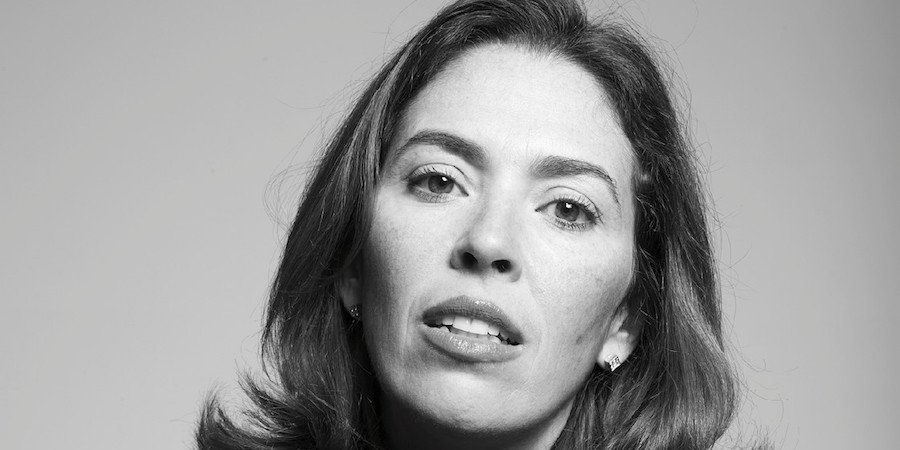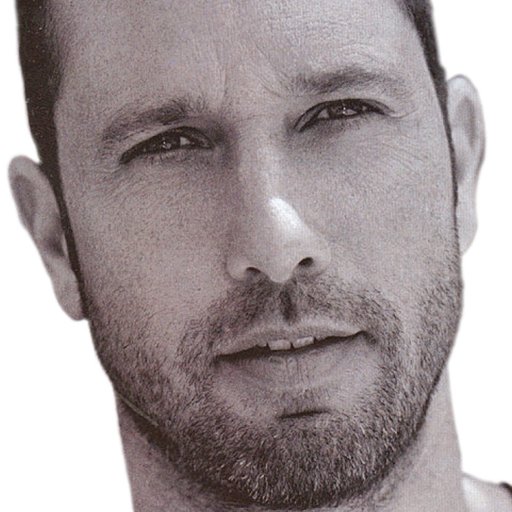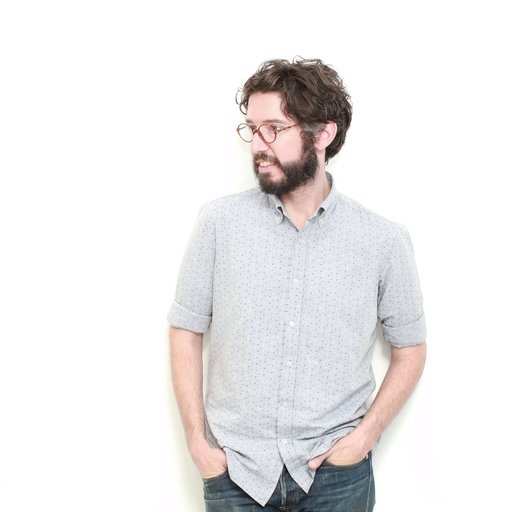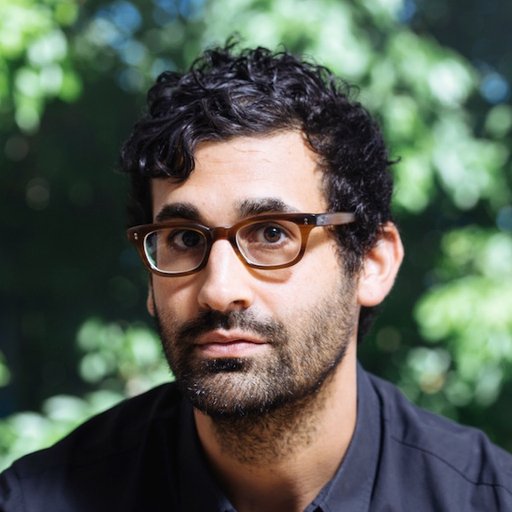Last March, the world’s elite art buyers were gripped by a scintillating piece of news: Amy Cappellazzo, who for 13 years was Christie’s top rainmaker and glossy-magazine-gracing dynamo, was leaving the auction house to put out her own shingle as an art advisor. It wasn’t such a shocking development, considering the departure of Tobias Meyer from Sotheby’s a few months earlier for similar green pastures, and the fact that private sales have emerged in recent years as a critical source of real revenue for auction businesses top-heavy with guarantees (third-party or otherwise). But, with Cappellazzo joining forces with the redoubtable Allan Schwartzman—best known as the advisor to Brazilian collector Bernardo Paz—to create Art Agency Partners, a new locus of power in the market was created overnight.
The boutique firm has since grown its client list, expanded its ambitious range of velvet-glove services, and established a quiet position of influence within the art world. Artspace editor-in-chief Andrew M. Goldstein spoke to Cappellazzo—whose career achievements include helping to bring Art Basel to Miami Beach and pushing Christie’s to go online—about Art Agency Partners, the pause-giving trajectory of the auction market, and the future of collecting art with the click of a mouse.
We’re now coming up around the one-year anniversary of Art Agency Partners—how has the first year been, and where are things standing today?
It’s been a super-exciting year. I had left Christie’s after 13 years—it’s fair to say that 13 years is a long time to do something—and I was ready for the next chapter of life. At the moment I think the art market is very strong, and also it’s an interesting time of changes in terms of how art is perceived as a global asset class. Collectors look at their collections differently, and distribution systems have also changed a bit with online things like Artspace. Auction houses are getting more into private sales. It’s an industry in transition, and that’s exciting.
Can you talk a bit more about these changes—the way that art is perceived as an asset class, as well as a cultural commodity?
I’m old enough to be from the old art world, where one can lament parts of this change, but I never think change is a bad thing. So, to quote Joni Mitchell, “Something’s lost but something’s gained in living every day.” You just move forward with what’s going on and try your best to make the most of it. But look, as the value of art has increased tremendously over the last five years, people have come to view it differently. Suddenly it’s this asset in people’s lives, and so what was once a personal passion or curiosity—something that could be put aside to focus on more important things—can suddenly be very valuable if you were buying well and bought high-quality, desirable works.
So people have to look at it differently, and many people can’t continue to collect because the price got too high, or they have to diversify what was once the bedrock of their collections because that art has become too expensive. All of this is to say that the wonderful, charming, idiosyncratic art world is now desirable to a larger number of people in the world, many of whom have a tremendous amount of capital. You just see more subscription of capital and more participants coming into the art market.
How would you describe the sweep of the clientele you work with in this changed environment?
We don’t have that many clients in their 30s, but let’s just say they’re in their 30s to 80s. They’re not really marked by being in a certain generation, they’re not really marked by geography—they’re from all over—and they’re not really marked by how they made their money, because some people made it a long time ago and some more recently. So I can’t say there’s a single hallmark, like “I work with people in real estate” or “I work with people from Hollywood.” But they all want excellent expertise on the historical side as well as in market savvy, execution, and knowledge.
What kind of art are you looking at on their behalf? Is it all contemporary or are they interested in a range of historical eras?
It’s really 20th century to the present, so it can stretch back further than the ‘50s, but mostly it’s postwar.
Would you say you mostly deal with blue-chip work, or do you also help clients acquire pieces by emerging artists?
To be honest with you, it’s much more blue-chip sales than stuff out of the studio. We are very close to the young market, and we do look closely at young and emerging artists who are getting a lot of attention—we love a lot of the dealers who are in this nexus of the marketplace and are showing artists for the very first time or building artists’ reputations from the get-go. So we have a lot of interest in this part of the market, both personally and professionally. But I do think that the young end of the market has become so incredibly oversubscribed.
There’s so much passion and such a flurry of activity around contemporary art right now that many are entering the market at a price point that feels entry-level, which means emerging artists, but the truth is that artists go right on up from entry-level price points really fast rather than having to wait for their second, third, or fourth show and a couple of group shows, et cetera. The acceleration of prices on the entry-level stuff is just so great that very few artists survive the glare. So we work a little more prudently in the market and are probably a better resource for people who are at the next level of seriousness and are in pursuit of more blue-chip, historical work that they want in their collection.
How do you filter the clients that you work with?
You have to have a good feeling about someone—that’s the first filter. When I was at Christie’s anybody who walked in or called me was my client, basically, which means one had to work with absolutely everyone. This is definitely a different experience. I guess they filter us first, and by the time they come to me there’s not necessarily a great need to filter because they’ve found us and decided that we’re right for them; then we get to know them, and if it feels right we proceed. I’m not sure I have such a scientific answer, but someone has to be very serious and has to want art at a level that is worth the time and expense of working with us. It’s really self-selecting.
Is there a ballpark figure that a client needs to be prepared to spend?
There are a lot of ways to work with someone and there are different services we can provide, but honestly anything within the purview of cost is not something I would put in print. It’s too tailored and individualized. We certainly can figure out a way to work with anyone who wants to work with us.
On your company’s website, it states that one of AAP’s specializes is “strategic guidance on collection identity and development.” What does this mean?
It can mean several things. Sometimes that development is how to grow the collection in a new direction, or sometimes it’s how to shrink the collection and deaccession works to shape it a little more tightly. We’re working with clients at all different stages of their collecting, from right from the beginning to where they’re in the process of deaccessioning—at all stages of life, you could say.
Could you expand a bit more on what you mean by “collection identity”? How can a collection have an identity distinct from the collector?
It can be as simple as a collector coming to us and saying, “When I started collecting I bought artists X, Y, and Z, and then I went off and bought all these other things; suddenly I realized I want to go back to X, Y, and Z. So, what’s the best road to get back to that?” We’re working with someone now who’s been a very active collector in the market for many years and has a well-known and large collection but is looking to make the collection a little bit tighter in every way.
Part of that, for some collectors, is realizing that they own more objects than they could ever possibly display, and that some of their objects will never leave storage. You know, there’s a certain stage in life where people don’t mind storage spaces, and then there’s another where people think, “You know what? I’m going to try to get out of the storage stage of life and hone things a bit.”
When collectors achieve the level of seriousness that you require, they are often collecting with the intention of placing their art in a private foundation. What do you make of the proliferation of foundations?
The world has always had art foundations. The Frick and the Isabella Stewart Gardner Museum are great examples of what happens when a private pursuit becomes a public institution. This has been happening for centuries, and there are certainly many to speak of. But I think that as major collections are increasingly assembled privately, more collectors are feeling entrepreneurial about their collections in terms of, “Hell, I’ll just build my own museum,” instead of wanting to give their art to a museum in the more traditional manner.
That presents an interesting opportunity and a change in the landscape for the more established museums, because for them it probably looks like a bit of competition, but it will just force them to be more innovative in the way they’re working with patrons and collectors. That’s probably a good thing.
How do you work with these kinds of foundations? Do you focus mainly on acquisitions and the collecting side of things, or do you also help with administrative matters, like bringing in curators or directors?
It depends on what the needs are, but we can certainly be soup-to-nuts. By the time someone has a foundation they probably have some structure in place, and typically we might work alongside that or help augment it in some way.
So you’re in the business of building baby museums?
I’m not sure I would say it exactly that way. It’s not our decision to make a museum—that definitely comes from the collector, not from us.
Artist agencies are a hot topic in the news now that United Talent Agency has entered the field, and another aspect of your panoply of offerings is that you are working with artists directly. What does that entail?
Sometimes artists need services and advice that are different from what their dealer might provide. It’s not that they’re ill-equipped, but, for example, a dealer might not be thinking about the long-term legacy of your estate—they might not be thinking of their own estate, let alone their artists’. It just involves a different way of looking at an artist’s work and figuring out what might be the best strategy for the multigenerational long term.
Again, it depends on the artist's stage of life and where they are in their career. Our artist interactions have thus far been with more established artists. Their main issue is that a dealer doesn’t often think about what will become of their work in 50 years—that's just not normally what the dealer has in mind. But dealers are certainly a critical part of the art-world ecosystem, and the goal is, where appropriate, to work in concert with them rather than to supplant them.
You and your business partner, Allan Schwartzman, make for an incredibly dynamic pairing, with Schwartzman famous for helping build Bernardo Paz’s collection at Inhotim in Brazil and for his years of work as an art journalist. How do you two split the work to leverage each other’s personal gifts?
It’s funny—Allan just had a two-hour phone meeting where he was me, doing what my job normally is, while I was off somewhere else doing something Allan would do. We do have very different talents and skills, but we also have a good overlap in values and sensibilities and strategies. We respect each other’s temperaments, sensibilities, eyes, and talents. We understand each other.
How did you guys team up in the first place?
We’ve known each other for a very long time, from before my time at Christie’s, and at Christie’s I worked for many years with Allan and his clients. We’ve had the chance to get to know each other personally and professionally over a long span of time.
Another key member of your team is Adam Chinn, who has been an investment banker and a lawyer. How does he fit into an art-advisory firm?
Adam has 20 years of experience at the storied New York law firm Wachtell Lipton, and he’s a terrific asset. Having legal, business, and operational talent is increasingly a part of the process in the art market and the art world, where if you want to ensure best practices in the industry you really need the kind of counsel nearby who is adept at doing business deals. It’s important for us to have that kind of counsel in-house—you just want to make sure that all of the things you’re doing have the best attention from someone who is extremely knowledgeable about the legal ramifications, of everything from insurance to moving an object to a contract. It could be anything, really.
Last year’s highly public legal battle between Ronald Perelman and Gagosian over a Jeff Koons purchase really shed light on the kind of agreements around these very high-level acquisitions.
Look, this is a real business, and I take it very seriously. I take it so seriously that I thought it was necessary to have this kind of wisdom and counsel alongside us if we want to ensure the best practices in the industry.
Moving back to the topic of your tenure at Christie’s: the timing of your departure now seems spectacularly prudent in the wake of the enormous shakeups at the end of last year, when the CEOs of both Christie’s and Sotheby’s stepped down. To the outside world, at least, these were stunning developments, particularly considering that the headlines had been full of record-setting auction tallies. What’s going on? Is there any insight you can provide on why everything looks so sunny on the surface of the auction business while there’s such turmoil underneath?
The timing did work out, right? An old friend of mine once told me that "life is about timing and lighting," which I think is a very funny expression. I suppose it looks like it was good timing, in retrospect. Essentially, though, auction houses are increasingly complex businesses because the art market is increasingly complex in terms of geography and channels of distribution and revenue sources. It’s just become a bigger and bigger business, and there’s a lot more that needs to go into how they’re run. So the industry is scrambling and reconfiguring—it’s a very interesting time in this business.
Now that Christie’s and Sotheby’s are looking to replace Steven Murphy and William Ruprecht, respectively, what skill sets do you think will be necessary for their successors to take advantage of the current moment?
In terms of skill sets, auctions weren't truly a global business and now they are. It’s very clear that other channels of distribution play a big role, so private sales, online sales, et cetera are critical. In the old days, these were simply agent-based auction businesses, but the more the auction houses use their own capital the more that changes the type of business they are in. Sotheby’s has a very robust lending program, and both houses do more that looks like private equity. But as you look at the overall industry, you have to be very savvy and have a little bit of a crystal ball to imagine where it’s is going.
If you were in charge of the search process for the next chief executives of these companies, is there any industry in particular you would look to? Would you be looking for a Lloyd Blankfein?
I don’t think Lloyd is interested in the job, honestly. [Laughs] But it remains to be seen. There’s a lot of speculation—will they go with an insider or will they go with an outsider? I stand on the sidelines and wait and watch like you. I’m just not sure.
What do you think about the continuing auction trajectory? Are we going to keep seeing record after record after record every year, with a single auction passing the billion-dollar mark in the near future?
Well, the laws of gravity tell you that what goes up must come down. I suppose it’s not likely to expand forever. At the moment the market still seems strong, but markets hate uncertainty more than anything else. So as long as there’s greater uncertainty in the world, we can probably expect that it’s likely there’s going to be some volatility. It’s inevitable.
Do you think the drop in oil prices is going to have a really deleterious impact on the art market, in terms of purchases from the oil states?
Everything is this big economic ecosystem, so it’s not just oil prices because then it’s currencies, and currencies affect participants and plays in the markets, then it affects what gets sent where for which sale. So there is an effect on geographies and the success of the art fairs, and it’s all totally related.
So you feel that the market is on the verge of a contraction?
No—I mean, not imminently. But is there inevitability to it? Sure, because every market has fluctuation. So it’s inevitable, but I don’t think it’s imminent.
One of your last major accomplishments at Christie’s was bringing the business online in a significant way, beginning with the online auction of lots from the Andy Warhol Foundation. You’ve even said that you believe day sales will eventually take place entirely online. Would you say people are becoming more comfortable with buying art with the click of a button?
Listen, if you’re buying from a reputable source and you’re comfortable enough with your own experience buying something based on a photograph, then you’re already past that hurdle. Certainly people have been buying from photographs in the auction world for years and years, and they’re comfortable that way. It’s the same as any other industry. In the beginning we were all nervous to buy a $40 book from Amazon—it felt so scary, putting that on my credit card. In a broad consumer sense, we’re happy transacting at higher price points all the time. So it’s only a matter of time before people become more comfortable transacting in that sort of online space at higher price points.
Is this something that Art Agency Partners is interested in somehow getting involved with?
Let me back up and say that looking at art is still one of the few live experiences that still exist in the world, along with food and a couple of other choice activities, so acquiring it online isn’t our endgame. We tend to be more focused on examining the objects themselves, even though I think that the process of acquiring online is going to be more and more prevalent. They never look the exact same on a computer, and looking at them on your computer screen, or in a catalogue, is no substitute for having them live with you.



























